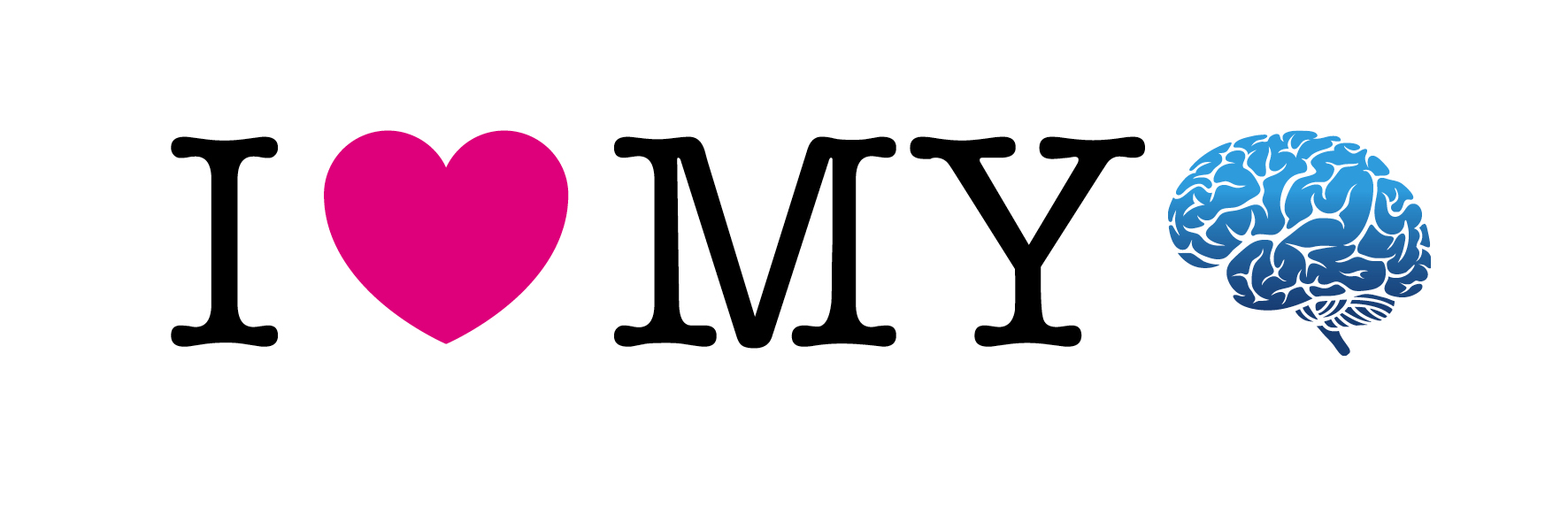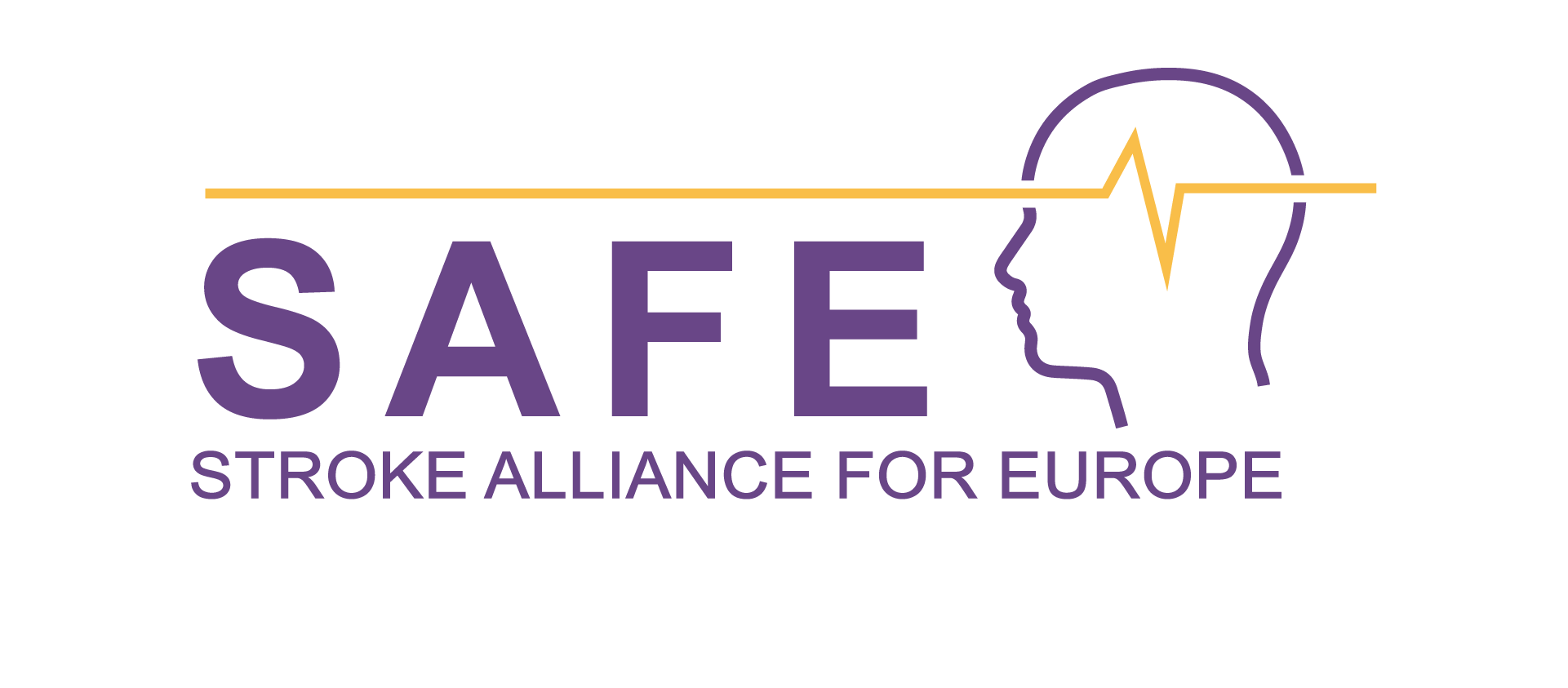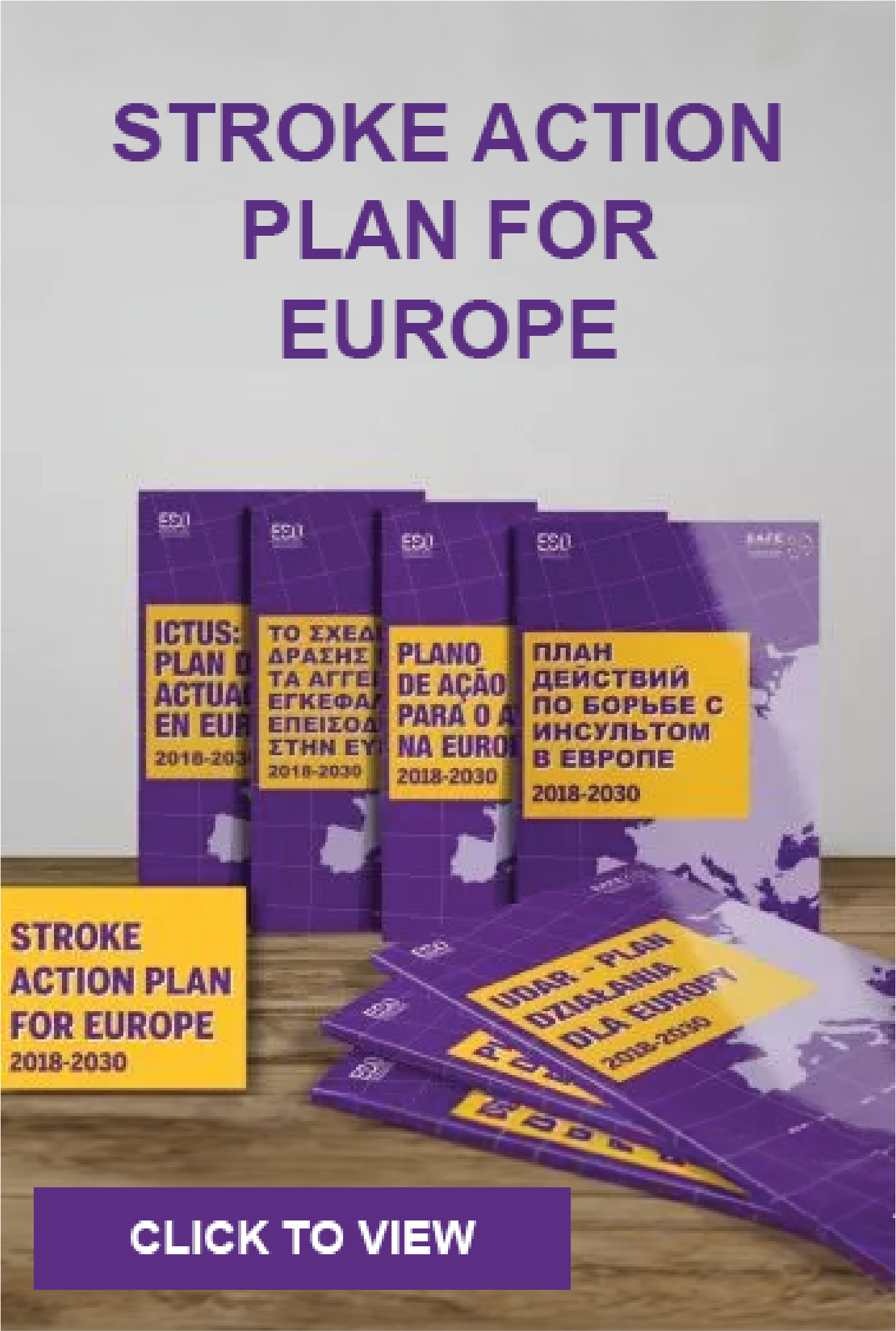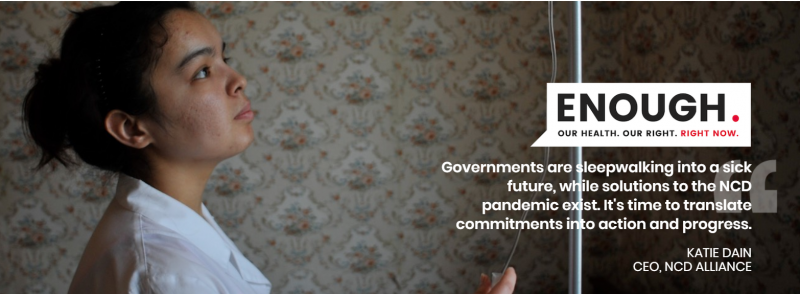
Aug 31, 2018
Death and illness caused by noncommunicable diseases bring suffering and heartache to millions of people worldwide every year – those who live with the diseases, as well as their families and friends. 70% of all deaths worldwide result from NCDs.
In light of the upcoming Week For Action on NCDs Activities & Comms within the ‘Enough.’ campaign, we used an opportunity to talk with Jelka Jansa, from the Stroke Support Organisation Slovenia. Jelka recently participated in a NCD Alliance workshop in Geneva and being an occupational therapist who works in an acute neurological hospital, she is very familiar with patient support organisations both locally and internationally, especially in the field of stroke.
What is ‘Week For Action on NCDs’ and when is it happening?
It takes place on the 3-9th September. As part of the Enough campaign, the NCD Alliance is encouraging the NCD community all over the world to observe a Global Week of Action on NCDs from the 3rd to 9th of September 2018 in the lead up to the UN HLM on NCDs which will take place later that month on the 27th September. The Global Week for Action on NCDs will catalyse activity among people who are engaged in the NCD movement everywhere, to initiate a transition from commitment to action on NCDs and we encourage you to get involved individually or through your country NCD alliances, in a way that works for you in your context, based on available resources, capacities and priorities.
This will be a global opportunity to talk to each other, to leaders, to media, to crowds, to the world about what works well and what needs to change to ensure a transition from commitment to tangible actions that not only yield reportable improvements in NCD targets and outcomes, but result in the improvement of health and lives of all people in all places.
The opportunities are endless. Possible activities include organising a meeting, street action, picnic, fun run, dance party, art competition or social media support. The week is your chance to do something achievable, appropriate, relevant and impactful where you live, but linked to a global movement. Saying ENOUGH is also a nice way of participating.
Objectives:
-
Show solidarity and a strong united civil society movement to address NCDs globally
-
Draw attention to the UN HLM on NCDs
-
Mobilise around the ENOUGH campaign and emphasise that we all say ENOUGH. Our HEALTH, is our RIGHT, and we need action NOW.
The Global Week for Action will be led by NCD Alliance, with collaborative support of the WHO Civil Society Working Group on NCDs, partners, members, supporters and wider NCD civil society network.
The Guide for Planning your Week for Action on NCDs, Activities and Comms is available for free at this link. It includes useful tips and checklists to help in your planning over the coming three weeks. To complement the guide, you can also find a suite of editable graphics for social media (with English and Spanish versions) to help to promote the Global Week for Action on NCDs and support your activities here.
WHAT HAVE YOU HAD ENOUGH OF?
Share your views and make your own pledge to help stop preventable death and suffering ahead of the 2018 UN HLM on NCDs.
TELL THE WORLD
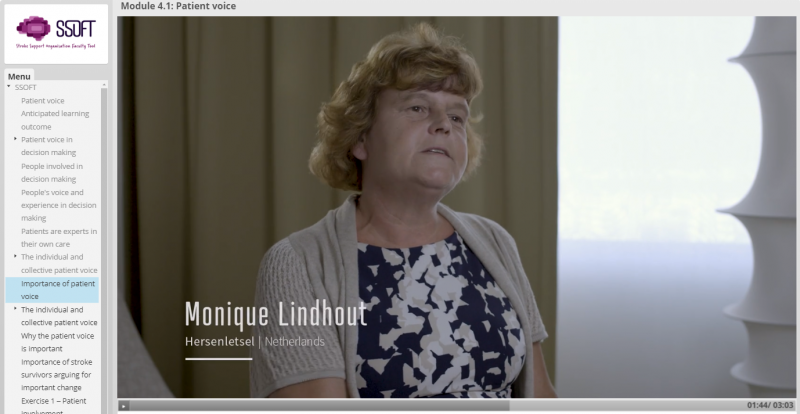
Aug 31, 2018
Brussels, 31st August 2018 – The eLearning Module 4 of the Stroke Support Organisation Faculty Tool (SSOFT) is published today at the following address www.ssoft.info.
In Module 4, using a combination of theory and practice, SSOFT demonstrates the impact of the individual and collective patient voice. Learners will develop an understanding for the role of the stroke patient and survivor in research and development of stroke guidelines; and how to argue for patient involvement and rights in the context of regulatory, ethical and advisory processes.
SSOFT’s fourth module focuses on what rights patients have and how the voice of the stroke survivor and their families can be used ethically to support SSOs causes and campaign.
The module is broken down in to five bite-size sections, which covers:
4.1 – Patient voice
4.2 – Patient voice in research
4.3 – Patient voice in guideline development
4.4 – Institutional processes impacting on the patient voice
4.5 – Patient’s rights
Stroke Support Organisations have been at the heart of this tool. For newer or smaller organisations, the information in the tool will provide knowledge that will help them build their capacities and grow. Larger organisations will be enabled to support their communities and other stroke professionals across Europe and add more voices to their movement/arguments for change.
This tool is also for anyone who is interested in knowing more about what an SSO is, how to start and develop one and how to make it sustainable.
For those interested in using this innovative eLearning platform we would encourage them to visit the SSOFT website www.ssoft.info
This online learning platform provides knowledge and training on how the creation of effective advocacy activities and campaigns to deliver positive change at a local and national level on stroke prevention, treatment and care. The eLearning platform will include six modules that provide information on:
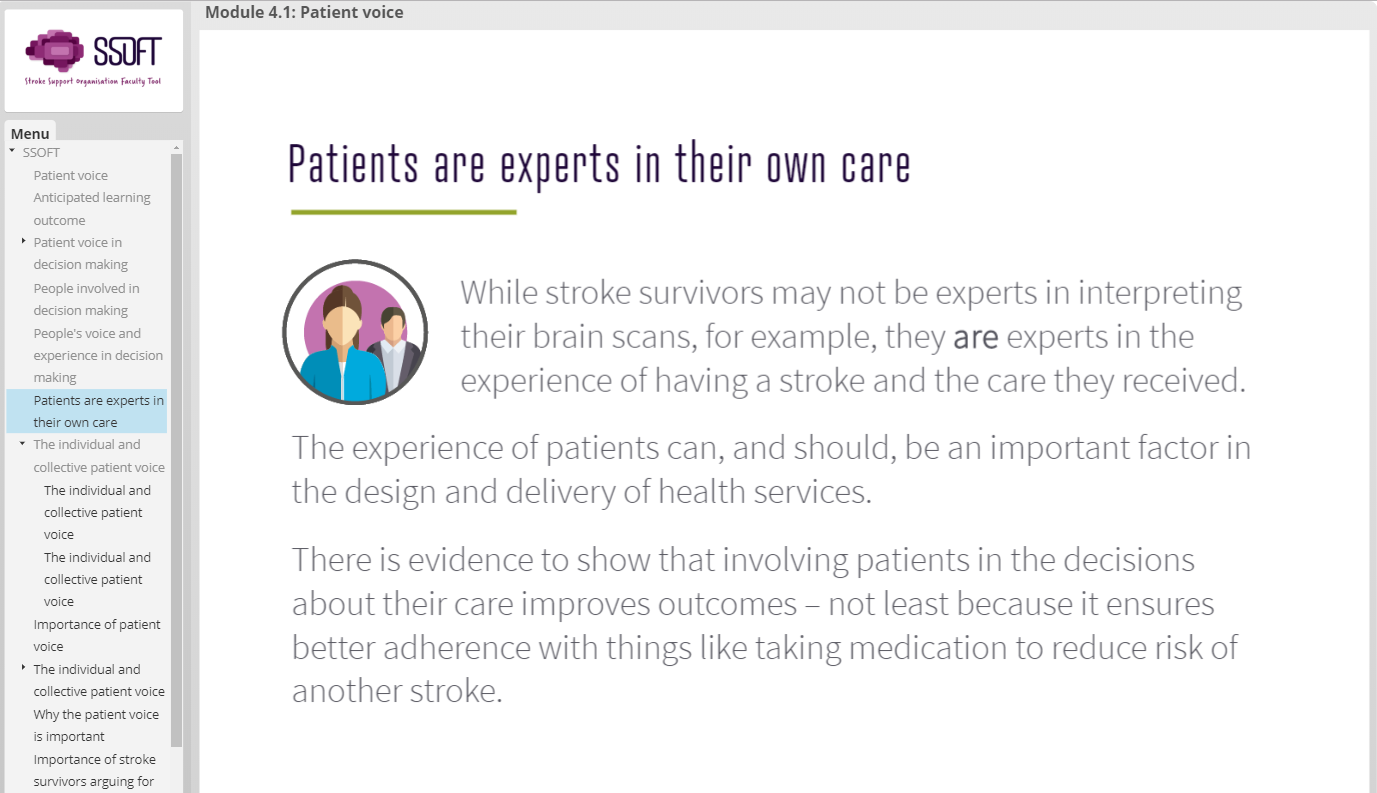
About SSOFT
SSOFT is an innovative online eLearning advocacy tool being developed by Stroke Alliance for Europe (SAFE), in partnership with the European Stroke Organisation (ESO).
Module 1: Stroke Support Organisations (SSOs)
Module 2: Making Change Happen
Module 3: Use of Evidence
Module 4: Role of Patient Voice
Module 5: Health System Advocacy
Module 6: Public Advocacy
The modules and learning environment is accessible via the SSOFT website through a simple registration process. Visitors to the website can also learn more about SSOFT, SAFE and ESO, find their nearest SAFE Stroke Support Organisation (SSO) as well as hear from SAFE members about their experiences.
For more information, please send an email ssoft@safestroke.eu or visit www.ssoft.info
Acknowledgments
SAFE would like to take this opportunity to thank and acknowledge the contributions made by those who have helped in the development of SSOFT and Module 4.
Stroke Alliance for Europe Board, who have been involved at every stage of development of this module.
The Peer Reviewers for module 4:
• Stiftung Deutsche Schlaganfall-Hilfe (Dr Markus Wagner)
• Hellenic Alliance/Action for Stroke Support Organization (Dr Hariklia Proios)
• Macedonian Stroke Association (Dr Anita Arsovska & Dr Maja Bozinovska Smiceska)
• Norsk forening for slagrammede (Ms Grethe Lunde)
• Thessaloniki and Wiesbaden NRZ, Rehabilitation Center Germany (Dr Dimitris Artemis)
• Aristotle University, Greece (Dr Katerina Nicolaidis)
• Anagenissis Rehabilitation Center, Greece (Ms Eugenia Stamatiou)
Our members who have shared their experiences and knowledge in the video interviews used within the module:
• Chris Macey – The Irish Heart Foundation, R.Ireland
• Pnina Rosenzweig – Neeman Association for Stroke Survivors, Israel
• Markus Wagner – Stiftung Deutsche Schlaganfall-Hilfe, Germany
• Monique Lindhout – Hersenletsel, Netherlands
• Jon Barrick – Stroke Alliance for Europe (SAFE)
• Bjørn Magne Bakke – Norsk forening for slagrammede, Norway
Our member and partner organisations who have collaborated in the development of the module content:
• Aivoliitto
• Fundacja Udaru Mózgu
• STROKE-Riksförbundet
• World Stroke Organization
• European Stroke Organisation.
And all those who participated in the User Acceptance Testing of module 3.
We would also like to thank the project sponsor Bayer Healthcare who have supported this project through an education grant.
About SAFE
The Stroke Alliance for Europe (SAFE) a non-profit-making organisation formed in 2004. It is the voice of stroke patients in Europe, representing a range of patient groups from 30 European countries.
SAFE’s goal is to decrease the number of strokes in Europe by advocating for better prevention, access to adequate treatment, post-stroke care and rehabilitation.
For more information about SAFE, please visit www.safestroke.eu
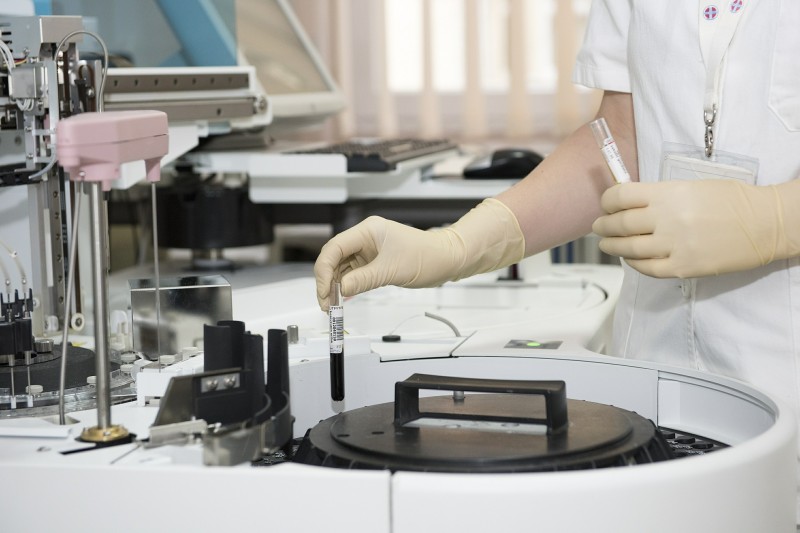
Aug 29, 2018
Published on ScienceDaily.com
Postmenopausal factors may have an impact on the heart-protective qualities of high-density lipoproteins (HDL) — also known as ‘good cholesterol’ — according to a study led by researchers in the University of Pittsburgh Graduate School of Public Health.
The findings, published today in Arteriosclerosis, Thrombosis, and Vascular Biology, a journal of the American Heart Association (AHA), indicate that this specific type of blood cholesterol may not translate into a lowered risk of cardiovascular disease in older women — bringing into question the current use of HDL cholesterol in a common equation designed to predict heart disease risk, particularly for women.
HDL is a family of particles found in the blood that vary in sizes and cholesterol contents. HDL has traditionally been measured as the total cholesterol carried by the HDL particles, known as HDL cholesterol. HDL cholesterol, however, does not necessarily reflect the overall concentration, the uneven distribution, or the content and function of HDL particles. Previous research has demonstrated the heart-protective features of HDL. This good cholesterol carries fats away from the heart, reducing the build-up of plaque and lowering the potential for cardiovascular disease.
“The results of our study are particularly interesting to both the public and clinicians because total HDL cholesterol is still used to predict cardiovascular disease risk,” said lead author Samar R. El Khoudary, Ph.D., M.P.H., F.A.H.A., associate professor in Pitt Public Health’s Department of Epidemiology. “This study confirms our previous work on a different group of women and suggests that clinicians need to take a closer look at the type of HDL in middle-aged and older women, because higher HDL cholesterol may not always be as protective in postmenopausal women as we once thought. High total HDL cholesterol in postmenopausal women could mask a significant heart disease risk that we still need to understand.”
El Khoudary’s team looked at 1,138 women aged 45 through 84 enrolled across the U.S. in the Multi-Ethnic Study of Atherosclerosis (MESA), a medical research study sponsored by the National Heart, Lung and Blood Institute of the National Institutes of Health (NIH). MESA began in 1999 and is still following participants today.
The study points out that the traditional measure of the good cholesterol, HDL cholesterol, fails to portray an accurate depiction of heart disease risk for postmenopausal women.
Women are subject to a variety of physiological changes in their sex hormones, lipids, body fat deposition and vascular health as they transition through menopause. The authors are hypothesizing that the decrease of estrogen, a cardio-protective sex hormone, along with other metabolic changes, can trigger chronic inflammation over time, which may alter the quality of HDL particles.
“We have been seeing an unexpected relationship between HDL cholesterol and postmenopausal women in previous studies, but have never deeply explored it,” said El Khoudary. Her study looked at two specific measurements of HDL to draw the conclusion that HDL cholesterol is not always cardio-protective for postmenopausal women, or not as ‘good’ as expected.
The number and size of the HDL particles and total cholesterol carried by HDL particles was observed. The study also looked at how age when women transitioned into postmenopause, and the amount of time since transitioning, may impact the expected cardio-protective associations of HDL measures.
The harmful association of higher HDL cholesterol with atherosclerosis risk was most evident in women with older age at menopause and who were greater than, or equal to, 10 years into postmenopause.
In contrast to HDL cholesterol, a higher concentration of total HDL particles was associated with lower risk of atherosclerosis. Additionally, having a high number of small HDL particles was found beneficial for postmenopausal women. These findings persist irrespective of age and how long it has been since women became postmenopausal.
On the other hand, large HDL particles are linked to an increased risk of cardiovascular disease close to menopause. During this time, the quality of HDL may be reduced, increasing the chance for women to develop atherosclerosis or cardiovascular disease. As women move further away from their transition, the quality of the HDL may restore — making the good cholesterol cardio-protective once again.
“Identifying the proper method to measure active ‘good’ HDL is critical to understanding the true cardiovascular health of these women,” said senior author Matthew Budoff, M.D., of Los Angeles Biomedical Research Institute.
El Khoudary recently was awarded funding from the National Institute on Aging to expand upon this research work. Her goal is to continue understanding the link between quality of good cholesterol over the menopause transition and women’s risk of cardiovascular disease later in life. She also seeks to examine the biological mechanisms that contribute to quality change of good cholesterol, so that the cardio-protective contribution of good cholesterol to postmenopausal women’s health can be clarified, which would impact guidelines for screening and treatment.
Additional authors on this study are Indre Ceponiene, M.D., Ph.D., of Harbor-UCLA Medical Center and Lithuanian University of Health Sciences; Saad Samargandy, M.P.H., of Pitt; James H. Stein, M.D., and Matthew C. Tattersall, D.O., M.S., both of University of Wisconsin; Dong Li, Ph.D., of Los Angeles Biomedical Research Center in Torrance CA.
This research was funded by NIH grants R01 HL071739, N01-HC-95159, N01-HC-95160, N01-HC-95161, N01-HC-95162, N01-HC-95163, N01-HC-95164, N01-HC-95165, N01-HC-95166, N01-HC-95167, N01-HC-95168, N01-HC-95169, UL1-TR-000040, UL1 TR 001079 and UL1-RR-025005; and a grant from Quest Diagnostics.
Story Source: Chicago, University of Pittsburgh Schools of the Health Sciences. “‘Good cholesterol’ may not always be good.” ScienceDaily. ScienceDaily, 19 July 2018. <www.sciencedaily.com/releases/2018/07/180719085420.htm>.
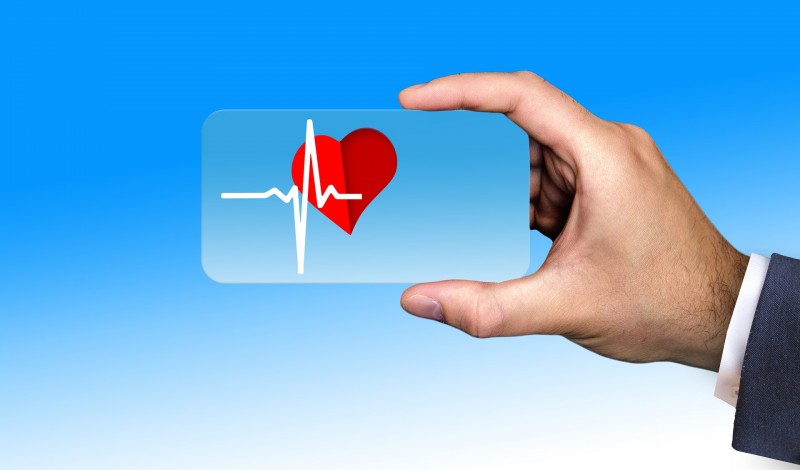
Aug 29, 2018
Published on ScienceDaily.com
Four out of ten patients with atrial fibrillation but no history of stroke or transient ischaemic attack have previously unknown brain damage, according to the first results of the Swiss Atrial Fibrillation Cohort Study (Swiss-AF) presented today at ESC Congress 2018.
“Our results suggest that clinically unrecognised brain damage may explain the association between dementia and atrial fibrillation in patients without prior stroke,” said Co-Principal Investigator Professor David Conen of McMaster University, Hamilton, Canada.
Patients with atrial fibrillation have a significantly increased risk of stroke, which is why most are treated with blood thinners (oral anticoagulation). This increased stroke risk is probably the main reason why patients with atrial fibrillation also face an increased risk of cognitive dysfunction and dementia. However, the relationship between atrial fibrillation and dementia has also been shown among patients without prior strokes, meaning that additional mechanisms have to be involved.
Clarifying the mechanisms by which atrial fibrillation increases the risk of cognitive dysfunction and dementia is a first step towards developing preventive measures.
Swiss-AF is a prospective, observational study designed to pinpoint the mechanisms of cognitive decline in patients with atrial fibrillation.2 This analysis investigated the prevalence of silent brain damage in atrial fibrillation patients.
The study enrolled 2,415 patients aged over 65 years with atrial fibrillation between 2014 and 2017 from 14 centres in Switzerland. All patients without contraindications underwent standardised brain magnetic resonance imaging and the images were analysed in a central core laboratory. Scans were available in 1,736 patients. Of those, 347 (20%) patients had a history of stroke and/or transient ischaemic attack and were excluded from the analysis.
The final analysis included 1,389 patients with atrial fibrillation but no history of stroke or transient ischaemic attack. The average age of participants was 72 years, and 26% were women. The scans showed that 569 (41%) patients had at least one type of previously unknown brain damage: 207 (15%) had a cerebral infarct, 269 (19%) had small bleeds in the brain (microbleeds), and 222 (16%) had small deep brain lesions called lacunes.
“Four in ten patients with atrial fibrillation but no history of stroke or transient ischaemic attack had clinically unrecognised ‘silent’ brain lesions,” said Professor Conen. “This brain damage could trigger cognitive decline.”
Most study participants (1,234; 89%) were treated with oral anticoagulants. Co-Principal investigator Professor Stefan Osswald of University Hospital Basel, Switzerland, noted that the cross-sectional analysis looked at the data at a single point in time and cannot address the question of whether the cerebral infarcts and other brain lesions occurred before or after initiation of oral anticoagulation. But he said: “The findings nevertheless raise the issue that oral anticoagulation might not prevent all brain damage in patients with atrial fibrillation.”
Professor Conen said: “All Swiss-AF participants underwent extensive cognitive testing. These data will be analysed to see whether patients with silent brain lesions also have impaired cognitive function.” Collaborations with other study groups will help to sort out whether these findings are specific to patients with atrial fibrillation.
Story Source:”Four out of 10 patients with atrial fibrillation have unknown brain damage.” ScienceDaily. ScienceDaily, 26 August 2018. <www.sciencedaily.com/releases/2018/08/180826120744.htm>.
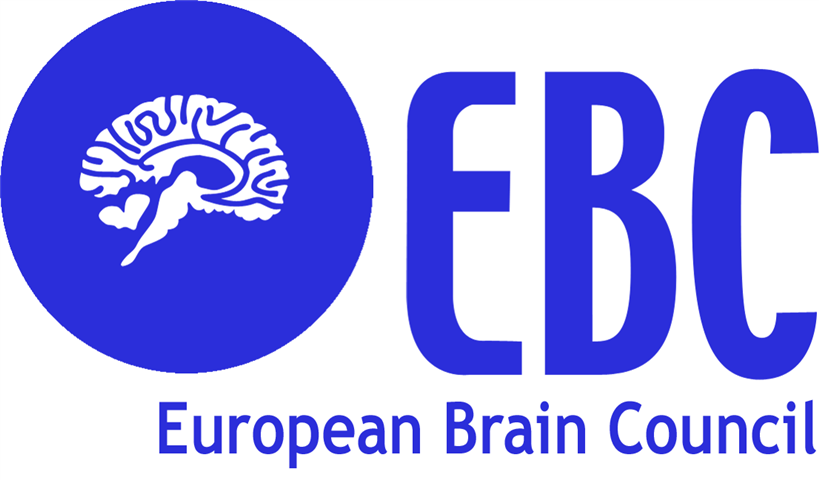
Aug 28, 2018
The original information provided at Braincouncil.eu
In July this year, European Brain Council launched a statement “Counting down to zero: Towards a future with underfunded health research?” which calls on the European Commission, the European Parliament and the Council to increase the budget of the “Horizon Europe” programme to at least €120 billion. What is more, the statement calls on European decision-makers to redistribute the budget in order to ensure that more funding is allocated to the “health” cluster under Pillar II.
The proposal for “Horizon Europe”, published in June 2018, includes an overall budget of €94.1 billion in inflation-adjusted prices. Within this budget, roughly €7.7 billion is proposed to fund the “Health” cluster that is part of the pillar “Global Challenges and Industrial Competitiveness”.
EBC welcomes the increase of the overall draft budget but firmly believes that the proposed budget as it currently stands is insufficient to effectively address today’s societal challenges. The treatment of brain disorders alone is estimated to cost close to €800 billion annually[1], which makes adopting a robust 9th Framework Programme with a strong focus on accelerating health research of paramount importance. What is more, the proposed budget for the “Health” cluster confirms a steady decrease of funding over time and across Framework Programmes, as health was previously allocated 12% under the 7th Framework Programme, 10% under Horizon 2020 and now 8% in the Horizon Europe proposal.
“We are highly concerned about the budget of €7.7 billion provisionally allocated to the “health” cluster under
Pillar II. This amount is not commensurate with the total budget increase and will clearly be insufficient to
effectively address the societal challenges associated with health research. Moreover, this budget confirms a
steady decrease of funding over time and across Framework Programmes, as health was previously allocated
12% under the 7th Framework Programme, 10% under Horizon 2020 and now 8% in the Horizon Europe
proposal. For continued success in European research, we find it imperative that this downward trend is
stopped and reverted.”– says the statement.
The full statement can be accessed here.
EBC invites all organizations, operating at national and/or EU level, that are supportive of the call to join as co-signatory of the statement. Please contact the EBC office (info@braincouncil.eu or +32 (0)2 513 27 57) should you be interested in having the logo of your organization added to the list of signatories.
